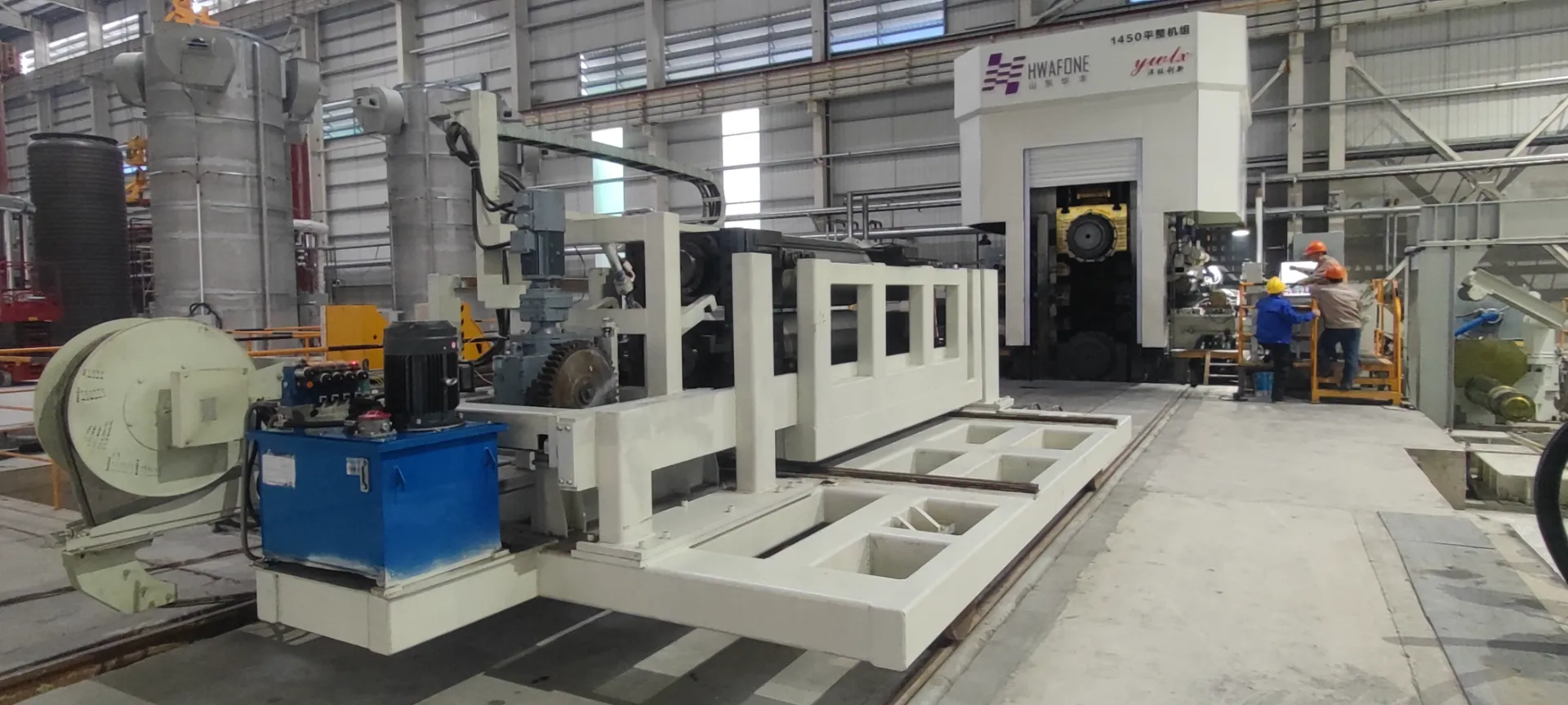
数字化和自动化对平整机行业的影响
The steel industry, particularly in processes like temper rolling and temper pass mills, has been undergoing significant technological advancements. With increasing demands for precision and efficiency, the integration of digitalization and automation has revolutionized these processes. These innovations are transforming the temper mill steel industry, ensuring more efficient operations, improved product quality, and enhanced safety standards. In this article, we will explore how digital and automated systems are shaping the future of temper pass mills.

平整轧机工艺中采用自动化
The temper pass mill is a critical component in the steel manufacturing process, used to refine and enhance the properties of steel sheets. Automation in the temper rolling process is helping to optimize the control of speed, tension, and temperature—three crucial elements in ensuring the steel's properties meet specific standards.
The integration of automated systems ensures continuous, real-time monitoring and adjustments, which results in consistent product quality. With automated sensors and feedback systems, operators can monitor the temper mill steel during processing, adjusting parameters on the fly to reduce human error. These advancements also improve production efficiency, reducing the need for manual intervention and enabling faster processing times.
自动化的主要优势 平整机 是在精度方面取得优异成果的能力。自动化系统可以实现更严格的公差和更均匀的材料特性,这对于汽车制造业等需要高强度轻质钢材的行业至关重要。
Digitalization in temper pass mills has been a game-changer, bringing more than just automation. The ability to collect, store, and analyze data has significantly improved the precision and efficiency of the temper rolling process. Advanced digital sensors and monitoring tools provide real-time insights into the entire production process. This allows for predictive maintenance, early detection of issues, and better decision-making.
In temper mill steel production, digitalization plays a pivotal role in tracking material properties such as hardness, surface quality, and thickness. These measurements are crucial for maintaining consistent quality, especially in industries requiring high-performance materials. By digitally mapping these attributes throughout the process, companies can optimize the tempering process to create steel with exact characteristics.
此外,数字技术可以与工厂中的其他自动化系统无缝集成,从而实现更加互联、数据驱动的生产环境。操作员可以访问仪表板和控制系统,了解性能指标、库存和维护计划,从而简化操作并减少停机时间。
平整机的预测性维护和数据分析
Predictive maintenance, powered by digital tools and automation, has emerged as a key application in temper pass mills. By leveraging sensors and data analytics, manufacturers can predict when a machine or component will need maintenance, preventing unplanned downtime and reducing repair costs. The combination of real-time data collection and predictive algorithms has significantly improved the longevity of equipment used in temper rolling and temper pass mill operations.
Through digitalization, temper mill steel manufacturers can collect data on machine performance and components' wear patterns, providing actionable insights. Machine learning models analyze this data to predict potential failures or areas of concern. As a result, companies can perform maintenance activities proactively, ensuring that machines operate at optimal efficiency, minimizing disruptions, and reducing operational costs.
预测性维护系统还可以通过在问题升级为危险或代价高昂的问题之前发现问题来帮助提高安全性。通过集成这些系统,操作员可以收到潜在故障的警报,让他们有机会在问题影响生产之前解决问题。
通过自动化和数字控制提高钢材质量
The combination of automation and digitalization in temper pass mills has greatly improved the quality of the finished product. By using automated sensors, advanced algorithms, and real-time feedback, manufacturers can achieve more consistent and higher-quality temper mill steel. The key to this improvement lies in the ability to monitor and adjust the rolling parameters to the exact specifications required for various steel grades.
例如,在平整轧制过程中,施加恒定的压力、温度和速度对于实现钢材所需的机械性能至关重要。自动化可以精确控制这些参数,减少人为错误的可能性,并确保生产的每张钢板都符合所需的质量标准。
数字工具还能监测钢材的表面质量,检测出加工过程中最细微的缺陷。实时识别和纠正这些缺陷的能力可生产出符合或超出客户规格的更高质量的钢材产品。
平整机的未来:迈向智能制造之路
Looking ahead, the future of temper pass mills will be driven by even more advanced digital and automated technologies, paving the way for smart manufacturing. In the coming years, we can expect to see further developments in artificial intelligence (AI), machine learning, and the Internet of Things (IoT), all of which will enhance the capabilities of temper rolling and temper pass mill processes.
Temper mill steel production will become increasingly automated, with AI systems capable of making real-time adjustments to optimize the rolling process. These advancements will allow for the production of even higher-quality steel at faster rates and lower costs. Additionally, smart manufacturing will enable real-time collaboration between different machines in the production process, ensuring the smooth flow of materials and information across the entire factory floor.
The integration of digitalization and automation in temper pass mills is not just about improving efficiency; it is also about sustainability. The ability to optimize resource use, reduce waste, and minimize energy consumption will be critical in making steel production more environmentally friendly. As more manufacturers adopt these technologies, we can expect the industry to become both more efficient and more sustainable.
通过技术改造平整机
The integration of digitalization and automation into the temper pass mill process represents a significant advancement in steel manufacturing. These technologies have improved production efficiency, precision, and safety, while also enhancing the quality of temper mill steel. The rise of predictive maintenance, real-time data analytics, and smart manufacturing systems promises to further transform the industry, driving improvements in both productivity and sustainability.
As temper pass mills continue to evolve with new digital and automated technologies, manufacturers will be better equipped to meet the growing demands for high-quality steel across various industries, from automotive to construction. By embracing these innovations, companies can stay competitive in an increasingly globalized and fast-paced market.
-
印度客户莅临 YWLX,验收5000KN光整机新闻Jun.22,2025
-
Typical Products from Reversing Cold Rolling Process新闻May.26,2025
-
Surface Finish Improvement through Skin Pass Rolling新闻May.26,2025
-
Integration of AGC Systems in Modern Cold Rolling Mills新闻May.26,2025
-
Cold Rolling in the Context of High-Strength Steel Demand新闻May.26,2025
-
AGC in Hot Rolling Mills: Challenges and Solutions新闻May.26,2025
-
Why Reversing Cold Rolling Mills Are Ideal for Specialty Metals新闻May.13,2025










